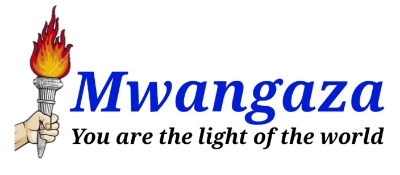Kindly introduce yourself to us
My Name is Harriet Atieno. I am a peace builder and i work with the local Peacebuilding structures in the Coast of Kenya to anticipate, predict and respond to conflicts that may emerge in the community.
What is the meaning of Countering Violent Extremism (CVE)?
Well, there is no definite meaning of the term CVE however, from the word Countering, it refers to measures or actions or activities that have been put in place or employed in reducing violent extremism.
Therefore, violent extremism(according to Mombasa County CVE Action Plan) refers to radicalized individuals who are prepared to engage in, or actively support acts of violence in furtherance of radically, illiberal, undemocratic systems or ideologies.
So, Harriet, what is this term `radicalisation’?
The word ‘Radicalisation’ is used recurrently by many state and non-state actors. However, its actual meaning is more intricate than most understand. That not withstanding, it refers to a process through which an individual or group adopts increasingly extreme social, political or religious ideals and aspirations that either reject or undermine the status quo or contemporary ideas and expressions. This whole process can be independent and self-driven or reinforced and at times originates from a broad social unanimity against changes in the society.
What are some of the reasons that lead to radicalisation?
A case like here in Kenya, it is reported that some causes are internal and external. External factors include issues like marginalization & unresolved historical injustices where some part of the country/community feel that they have been left out by the government.
Ideology. This is mostly done in name of Islam, and use texts such as Jihad to lure the youth. Police brutality. The youth find an opportunity to revenge because of such acts by the police. We also have personal psychological problems that predispose someone to be radicalized.
What is the best way to tackle those who are rumoured to be radicalised?
For a long time now, the government has been using the hard approaches in trying to address this issue. However, civil society actors have found that using soft approaches has proved to be more effective than the hard approaches. In my own opinion, the best way to deal with this issue is to employ a prevention action rather than reactive approach. In order to be able to do this, I think having stakeholders dialogue on the issue of radicalisation, trends and some of the causes would do a great deal.
Besides the stakeholders dialogues, it is also important to have organizations and other key community leaders have sensitization meetings in the community. I think this would be important because this issue starts in our homes, if the community is aware of this issue then they will be able to identify and also report to security officers for response.
How can you know that your friend is radicalised?
A radicalised person tends to withdraw him/herself from others, spends alot of time on the internet, he or she is always defensive/argumentative and also has sympathy for extremist groups.
From your experience, do you think that government efforts have helped to counter this issue?
I can not refute that police officers play a key role in preventing this menace. Here in Kenya, we have measures that have been put in place to address this issue. We have the National Counter Terrorism Centre (NCTC) that is in charge of dealing with the issue of terrorism. Besides, we have a National Strategy on Countering Violent Extremism that provides guidelines and recommendations on how to deal with this issue as a country. Besides, there are some counties that have come up with their own county CVE action plan based on their own individual context.
In terms of police efforts, they have been brought on board by civil society actors during community meetings and they urge the members of the community to report any security issues in the community. This has also helped in improving relationships between the police and community.
Which method/mechanism have you employed to reach the marginalized people?
My personal experience has been through working with the local Peacebuilding structures as provided for in the Kenya National Peacebuilding Guidelines 2012. These structures are comprised of members of the community who get to share their security concerns with the officer in charge of the area, either a Deputy County Commissioner, Assistant County Commissioner or the area chief depending on the level of the structure we are engaging with.
These structures bring together men, women, people with disability and the youth. The members in the structure are elected from the village level to the sub-county level. So you get to find that the members are key people who represent a population and have influence in their own community.
So, Harriet, what role can the youth play in preventing others from being radicalised?
It is important that the youth are empowered in order to be able to address this issue. You realise that 65% of the population are youth and most of them are unemployed, so this makes them vulnerable to extremists groups.
It is also important that the government and actors see the youth as an asset in terms of addressing such issues in our community. Since we are the most affected population, the youth are better placed to interact with fellow youth to understand some of the reall causes and also understand the trends in radicalisation.
What is your parting shot?
Terrorism is indeed a problem that is here with us and it is high time that everyone regardless of their own level and capacities need to be on the lookout. Just to take us back, here in Kenya we have suffered a number of attacks from the 1998 US Embassy bombing to the recent Dusit D2 attack. So if you suspect anything, lodge a report to the nearest security providers. And incase of an attack, run, hide and tell.










